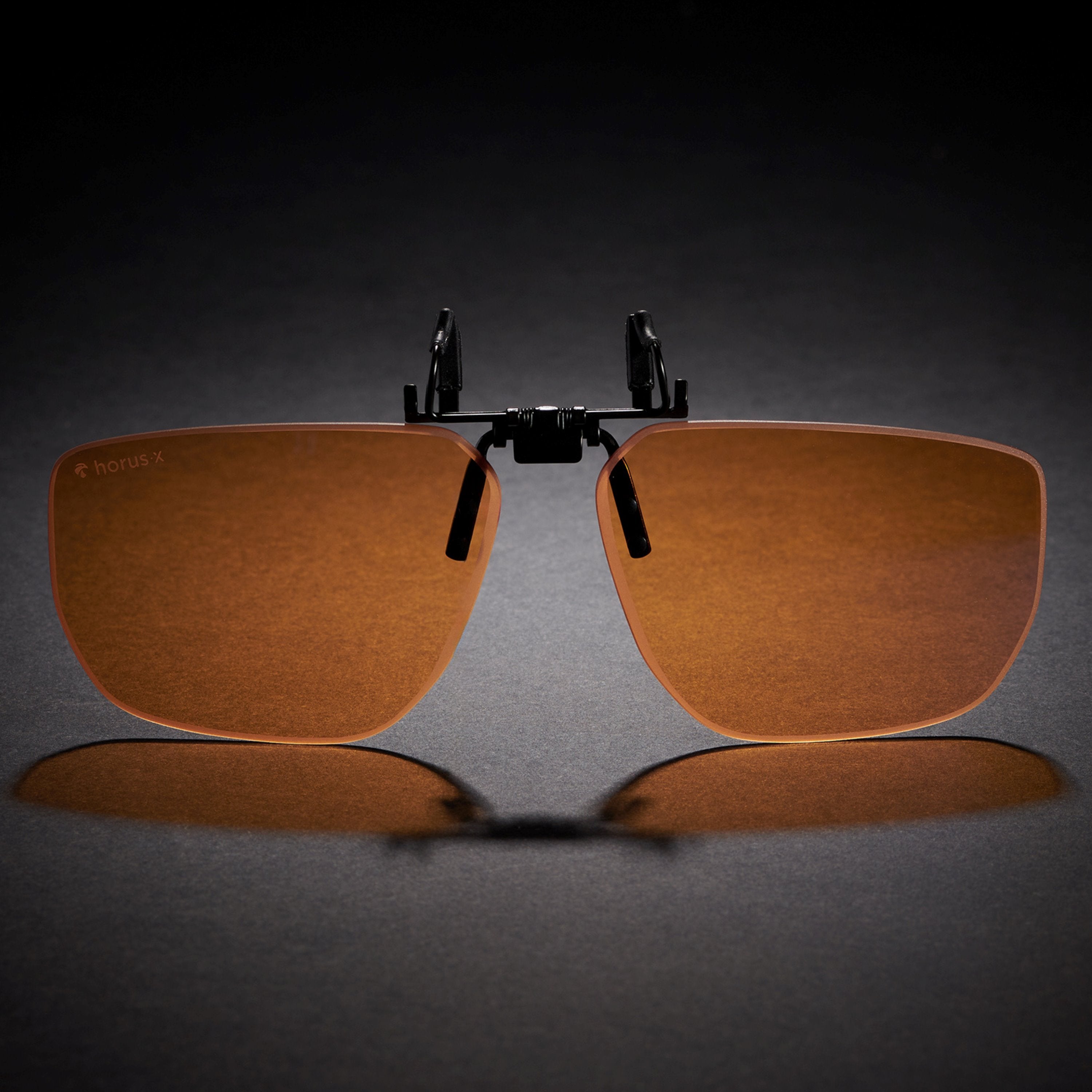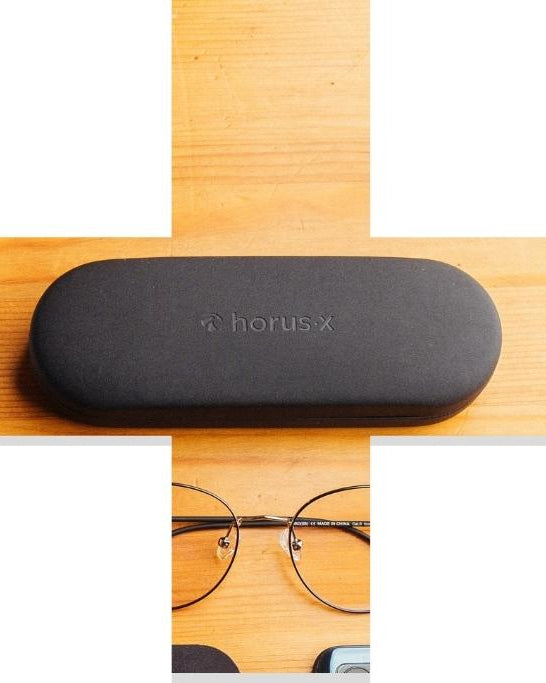If you’re someone who needs to wear glasses 24/7, you want to make sure they look good and fit your style. With so many options to choose from and the cost of prescription lenses, you need to make the right choice when buying new glasses. But everyone’s face is different, so how do you know which frames and shapes will best suit you?
Glasses are no longer just for good eye health – they’re a fashion accessory. One that you carry with you every day. So, feeling comfortable and confident in your glasses is important; which is why we here at Horus X have put together this guide on how to choose prescription glasses.
We’ll cover how to decide your frame style and shape, depending on your facial structure. Then, you can choose all the right glasses accessories to match!
Let’s dive in!
Choosing the right pair of glasses: A frame for every face

The first step in your quest for good glasses is to choose from the selection of frames that best fit your face shape. You might want to stay away from wide frames if you have a small face, for example, so you don’t get lost behind the lenses.
Just like faces, there are a variety of frame shapes: round, square, rectangular, star-shaped, banana-shaped, 2004-shaped…the list is endless. Check out our handy infographic below to determine your face shape and learn which frames are best for you.
Choose your face shape

First of all, to know which glasses frame to choose, you need to know the shape of your face.
Check out the infographic above and see which face looks closest to yours. Still not 100% sure? That’s okay! Grab a mirror and take a look; you can determine the shape of your face by looking in more detail at its dimensions:
- 🔵 Round face: The width and length of your face are almost the same and you have a lot of curves, with soft lines and few or no angles.
- 🧑 Oval face: Similar to a round face, with curves and soft lines, but with more elongation. This is the most common shape for both men and women.
- 🟦 Square face: Like a round face, the height and width are equal, but you have more angular features.
- 🀰 Rectangular face: Your face is wider than a square one but retains the angular features.
- 🔼 Triangle face: If your forehead is narrow and the base of your face is wider, you have a face with triangular lines.
- 🔽 Inverted triangle (or heart-shaped) face: Conversely, if you have a wide forehead and a pointed chin, you have what is called an upper triangle-based face.
- 🔷 Diamond face: This is the rarest shape! The cheekbones are wide, with a narrower jaw and forehead. Often your face is quite angular and striking (think Anya Taylor-Joy).
💡 Note: Unless you’re Kirby or Steve from Minecraft, your face won’t be obviously super round or square, but looking at the angles and curves will help determine its shape. You could even be a mix of two or more types (which means more options for you!).
Which frame for which body type?

Okay, so now you know your face shape, but the question remains… which frame shape should you wear?!
Here’s what you need to know:
- If you have an oval face: You've hit the jackpot! All frames suit you, so the hardest part will be making a choice (our hearts bleed for you…)
- If you have a rather round face: Bring a little structure to these soft lines! We suggest opting for square or rectangular glasses and avoiding shapes that are too rounded.
- Is your face rather square? Choose thick rectangular or oval glasses to break up all those strong angular lines and add some softness.
- For rectangular faces: You’re best suited to round glasses, or even oval ones if your face is elongated.
- If you have a triangular face: To widen the forehead to balance the lines a little we recommend heavy frames that are wide at the temples to draw attention upward.
- In the case of an inverted triangular (or heart-shaped) face: It's the opposite. Choose frames that stretch downward to draw attention toward the lower half of your face and balance out the dimensions.
- For a diamond-shaped face: We recommend oval or round glasses.
Of course, all of this is just a guide. What’s most important is you feel good and are happy and comfortable in your choice. If you prefer square frames but you have a rectangular face, go for it! We’re not your mother.
However, if you do want more advice, don’t hesitate to ask your eye doctor (optician), try out virtual frames online, or go in-store and see how a few different types look. Factors other than face shape will determine which frames you choose, including your eyebrow line, face size, and coloring.
💡Pssst: Don’t forget to also get a pair of prescription sunglasses to match, so you’re protected come rain or shine!
Glasses thickness and myopia

Your frame choices are also dictated by how thick your lenses are. Some of us need much thicker lenses (and therefore frames) than others, as determined by the corrective prescription needed.
Of course, the most important thing and the reason you’re wearing glasses is to be able to see well. Make sure you get a regular eye exam and speak to your optician about your lens correction and the best type to suit your needs.
Correction types
Depending on your prescription lens, you might need a single lens, multifocal lens, or progressive lens.
- Single lenses are usually for people who are hyperopic, astigmatic, or have myopia (near sightedness).
- Multifocal lenses: For the unfortunate people who have several vision problems that need addressing.
- Progressive lenses: For those of us who are getting a bit older and find the further you hold your phone away, the easier it is to read text. If that’s you, you were probably born in the ‘70s or '80s at the earliest (I know…we’re old 😭)
Your lens is more discreet the thinner it is, but it’s all about your visual comfort. As long as that’s sorted, the choice of frames is secondary.
Don’t forget: Opticians also offer different treatments and filters to increase the lifespan of your glasses. That includes anti-glare coatings, anti-scratch resistance, or anti-blue light coatings. Adding these can provide extra protection and keep your best glasses usable for longer.
Choosing glasses frames when you’re short-sighted or have large lenses

Without your glasses you could be liable to stumble around, bumping into walls and missing every cue from your friends and family to watch where you’re going! But even if you know you need eyewear, it’s not always as easy as going out and picking a pair.
If you have something like myopia, your corrective lenses have a particular shape, immediately reducing your choice in frames. In the case of myopia, for example, the lenses are thick at the edge and thinner in the center. This means you have to choose smaller glasses to avoid looking like Bubbles from Trailer Park Boys.
In this case, your optician can offer you refined lenses that allow for a wider choice of frames. The downside is that this option can be pricey, leaving you with a hole in your pocket where your cash used to be. Ask your eye doctor about different costs and options so you can assess what’s reasonable for your budget.
Considering the frame quality and materials

Lens and frame shape isn’t all that’s important in the world of eyewear. You also need to choose glasses made from good quality materials, that are durable and long-lasting.
The best materials for glasses frames
There are plenty of different types of materials to choose from when looking at glasses’ frames, but the most popular are:
- Metal
- Acetate
- Titanium
- Polycarbonate
- Bio-based
Titanium frames may be known for their strength, but we recommend polycarbonate or bio-based glasses. We use these two materials at Horus X because we believe in their strength, durability, and eco-friendliness.
Wear glasses – save the planet!
Choosing good quality lenses
You can also choose the material your lenses are made from. Once again, we recommend polycarbonate lenses, for similar reasons: They’re durable, lightweight, and can be customized with additional treatments.
Finally, don’t forget your nose pads; unless you want your glasses to slide off your face. Whether you choose a polycarbonate frame with integrated support or a metal frame with a silicone nose pad, pay close attention to their fit.
How to choose prescription glasses: Final thoughts
Choosing glasses can be complicated. Make sure to think about which type of frame best suits your face, consider the type of material the lenses and frames are made from and any additional treatments you may want.
Your glasses don’t need to break the bank, though. There are plenty of affordable options, and you should always check with your insurance in case they cover additional optical expenses.
















